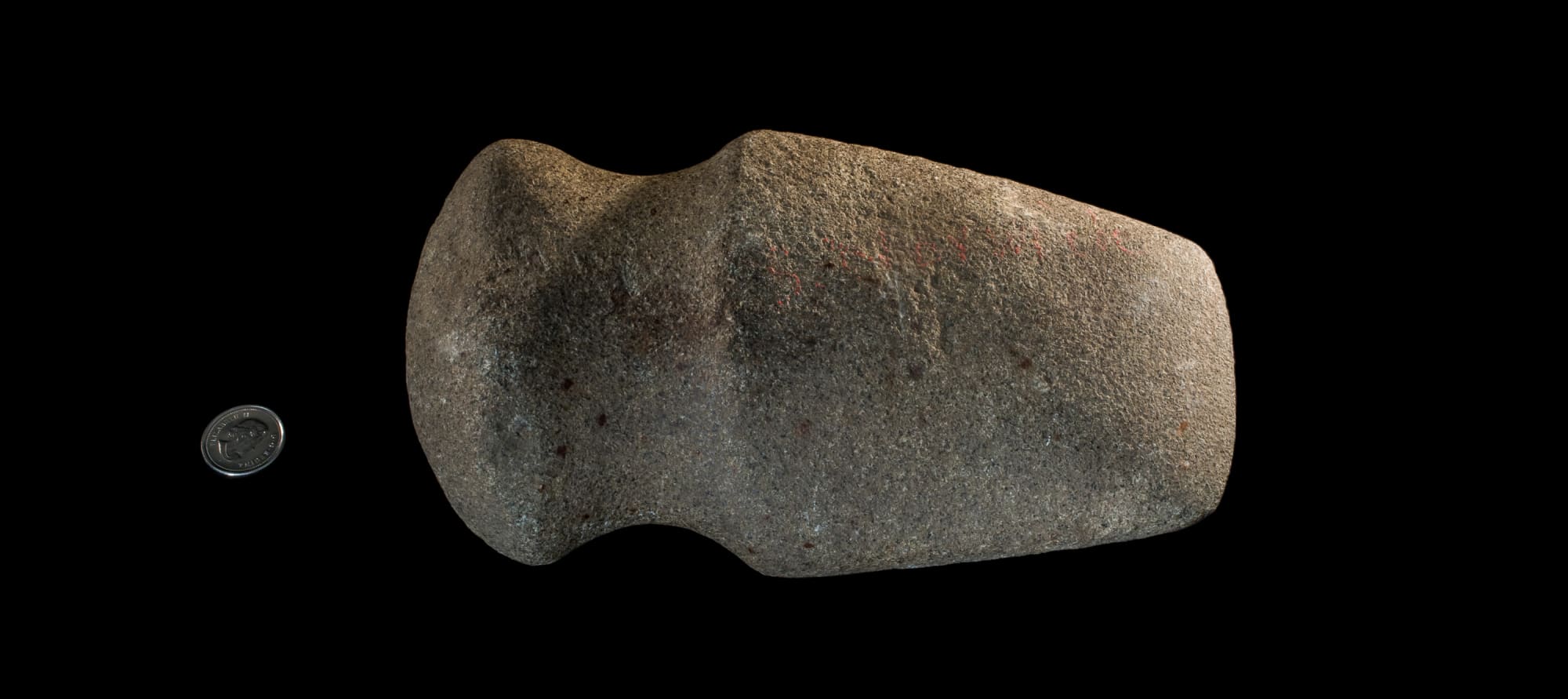Re-worked Tools - Hafted End Scraper 004.99.407, Hafted Knives 004.99.1289 & 004.99.1277, Drill 004.99.365
Formal chipped-stone tools such as projectile points start out as flattish, two-sided blanks or preforms knapped from very large flakes. These are then worked down to the appropriate size and shape before hafting elements, such as flutes, notches, or stems are added. Sinew and pitch adhesive were then used to mount the finished tool on a wooden or bone handle, spear or arrow shaft, or dart foreshaft ready for use. If they broke while in use, they would often be recycled into other tools. For example, a damaged projectile point could be reworked into something else while still mounted on the foreshaft, which would then simply become the handle. If the tip snapped off around the mid-section, the tool could be chipped into the crescent shape required for processing animal skins, as illustrated here by a hafted hide scraper. If the point was damaged closer to the tip or along one side, it could be chipped into a more asymmetrical form with one thicker side to provide strength and one thinner side to serve as the cutting edge. Additional re-sharpening of the two examples shown here is evident in the tiny flake scars along the cutting edge. The fourth item shown here is a drill bit that would have been hafted on the shaft of a bow drill. These were sometimes made from reworked points but could also be purposefully made from a blank. All of these examples are made of Onondaga Formation chert.





 Celts
Celts
 Grooved axe
Grooved axe